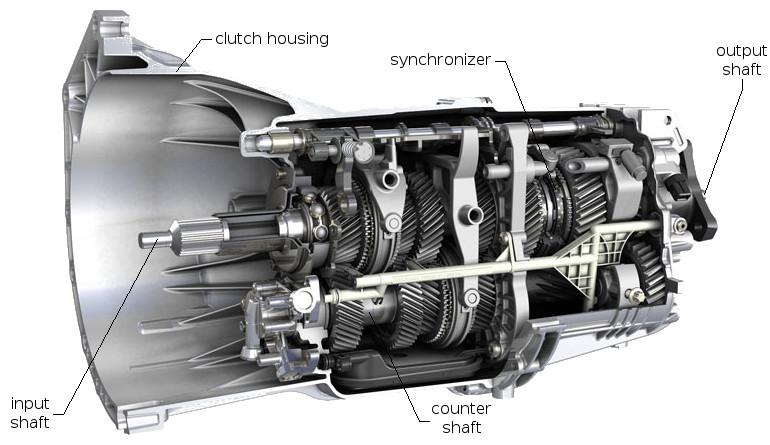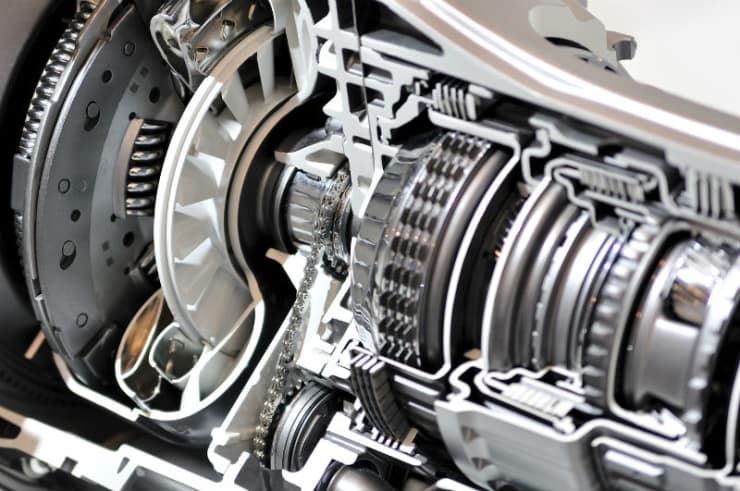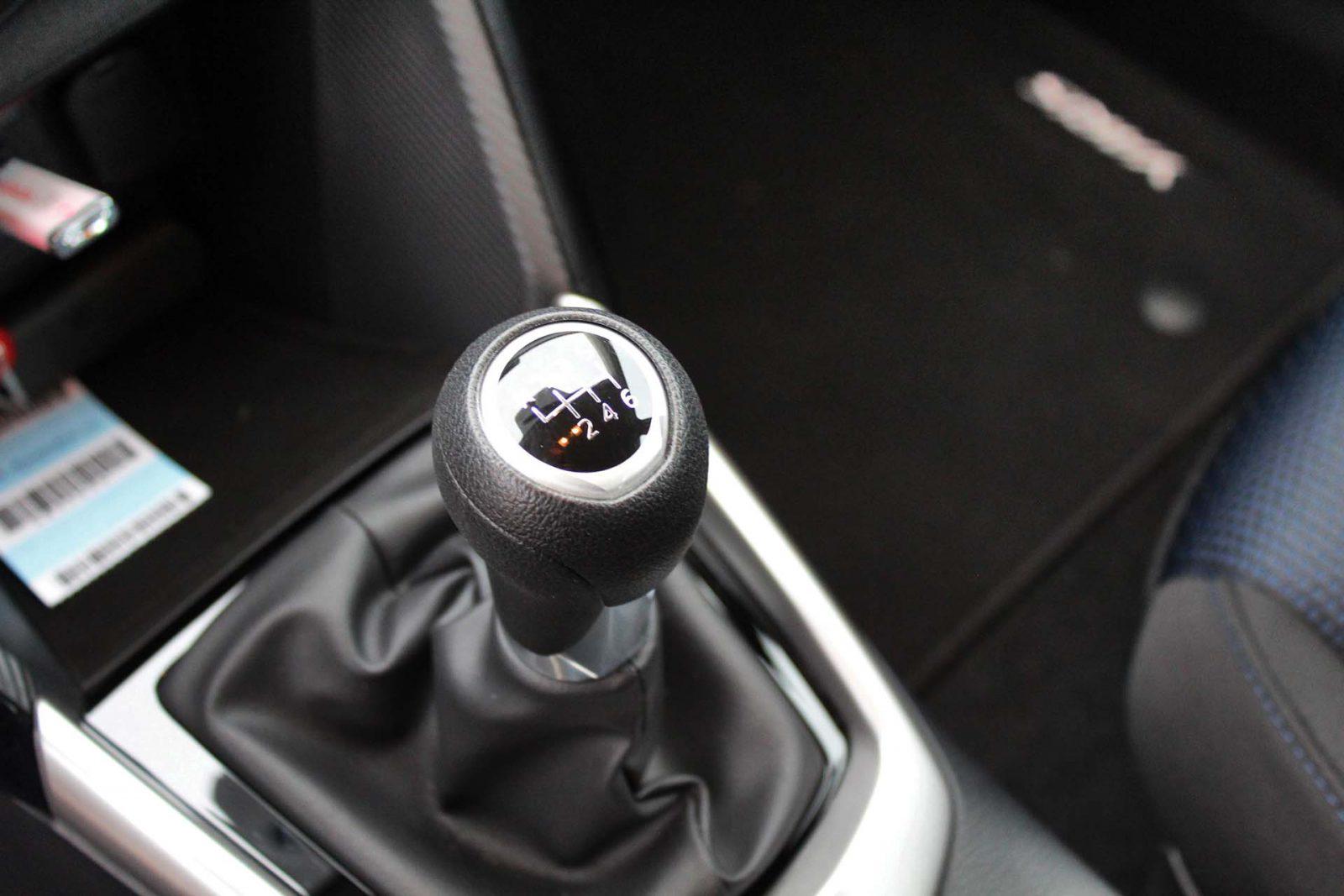If you are driving a stick shift transmission car, you will have a lot of questions floating in your mind like “How does a manual transmission work?”, “What is moving inside the manual transmission when moving the shifter?”.
In this article, we will answer all questions related to manual transmission and give you a basic knowledge of every vital component in your car’s drivetrain. Let’s go!
Contents
What is Manual Transmission? (Shift Stick)
Before finding out the answer to the question “How does a manual transmission work?“, you should understand what manual transmission is.
Manual transmission, a stick-shift or manual gearbox or standard transmission is a type of transmission in which the driver uses a stick to change gears literally.
In the past, manual cars often had a dash-mounted shifter or a steering column but nowadays, in modern vehicles, the gear stick is mounted vertically in the center console and linked to the transmission through a linkage.
Changing gears requires the clutch disc (which is located between the transmission and the engine) to be released through a 3rd pedal situated on the left of the brake. Then release the clutch, select the chosen gear and engage the clutch again.
From a standstill, the disc will wear out early if the driver engages the clutch too slowly. And if the driver engages the clutch too quickly, it will make the engine stall.

Studying how to drive a manual car takes more time than studying how to drive an automatic car, but it is funner and easier than it sounds.
When driving a car with manual transmission, you will feel there is a connection between you and your car that is too hard to reproduce with an automatic transmission car.
And another cool thing is that if you can operate a manual transmission, you will be able to run any type of vehicle.
Normally, a base-model vehicle is equipped with a 5-speed manual transmission. In more expensive vehicles, a 6-speed transmission is equipped instead.
Various Parts of Manual Transmission
These brief descriptions about the parts of a manual transmission will help you comprehend the complex way it works.

1. Clutch and Clutch Pedal
Consisting of various small components, the clutch transmits engine torque to the transmission. The clutch pedal is a hydraulically controlled piece of gear that disengages the clutch when you depress it.
2. Flywheel
The circular mass sends engine torque to the clutch disc that interacts with a smooth surface of the wheel.
3. Selector Fork and Collar
It’s an arm-like piece of gear that helps in moving the collars along the output shaft. On the other hand, you can select different gears with the collar by locking it to a particular gear, resulting in passing the torque to the output shaft from the layshaft.
4. Synchronizers
These help the gear and the collar to engage with each other and match their speed in case there’s a difference.
SEE MORE:
5. Layshaft and Output Shaft
The layshaft’s gears mesh with the output shaft’s gears when the first one receives the engine power.
6. Gears
You will find gears of various sizes in a manual gearbox. Larger ones have more teeth and provide more torque to curtail the car’s speed while the smaller ones produce less torque so that your vehicle can run at high speed.

How Does A Manual Transmission Work?
So, with all your newfound knowledge, let’s find out what happens when you shift gears in your manual car and see how manual transmission works.
- You have to press down the clutch pedal to disengage the clutch before switching the vehicle’s key on. It will cut the power between the transmission and the input shaft of the engine. As a result, the engine will be alive without powering up the entire vehicle.
- Move the gear shift into first gear, which is located in the output shaft, so that the shifting fork advances towards the latter one. The first gear is connected to a layshaft gear. The layshaft, on the other hand, has a connection to the input shaft of the engine through another gear.
- There’s a synchronizer collar attached to the shifting fork. It helps the driving gear to transport power to the output shaft and sync up their speeds if there’s a difference. You put the vehicle in gear when this collar locks with the first gear, which is in a secure attachment to the output shaft.
- Now, put a slight pressure on the gas pedal and take the foot off the clutch. It will reconnect the engine with the gearbox. Then, the vehicle will start moving forward.
- Shift to the second gear after pushing the clutch to go faster. It will disconnect the power between the engine and the transmission gearbox. You just need to repeat this process to change the gear so that you can slow down or speed up the car.
Watch the video below to have a better knowledge about how a manual transmission works!
FAQs on Manual Car Gear System
-
How long do manual transmissions last?
You should anticipate the manual transmission’s components to survive for more than 120,000 miles with good driving, use, and maintenance.
You may extend the life of your transmission by keeping a watch out for transmission leaks and properly working the clutch and gears.
-
How frequently should a manual gearbox be replaced?
Manual transmissions might break significantly sooner, especially if basic maintenance is neglected.
If your gearbox has more than 80,000 miles on it, it may be in your best financial interest to replace it rather than paying hundreds of dollars on repairs every few months.
-
What are the drawbacks of a manual transmission?
- In heavy traffic, a manual might get tiring.
- The learning curve is really steep.
- On slopes, careful control is required to avoid stalling or rolling back.
- It might be difficult to locate a handbook for higher trim levels.
-
Are manuals less expensive to maintain?
Manual transmissions are less expensive to maintain. With all of the additional equipment that goes into an automatic gearbox, it may wind up costing you a lot of money simply to keep it functioning correctly.
Manual transmission automobiles require extremely less upkeep, and maintenance and repairs are often far less expensive.
-
Is it cheaper to buy a manual or an automatic?
Because of their basic mechanism, manual transmission automobiles are less expensive up front. It takes more complicated technology and parts for an automated automobile to be able to swap gears on its own.
Wrapping up, hopefully through this article, you will get to know the answer to the question “How does a manual transmission work?”.
If you have any question about manual transmission, stick shift transmission, feel free to leave us a comment below. And keep reading on us to get more car maintenance tips updated everyday.




great.learned something
We are happy to receive your comments. Please share with your friends so they can enjoy this article, too.
good lesson to the users
Great articles, very informative
My mazda 323 2003 model keeps popping out of 5th gear wat does that mean